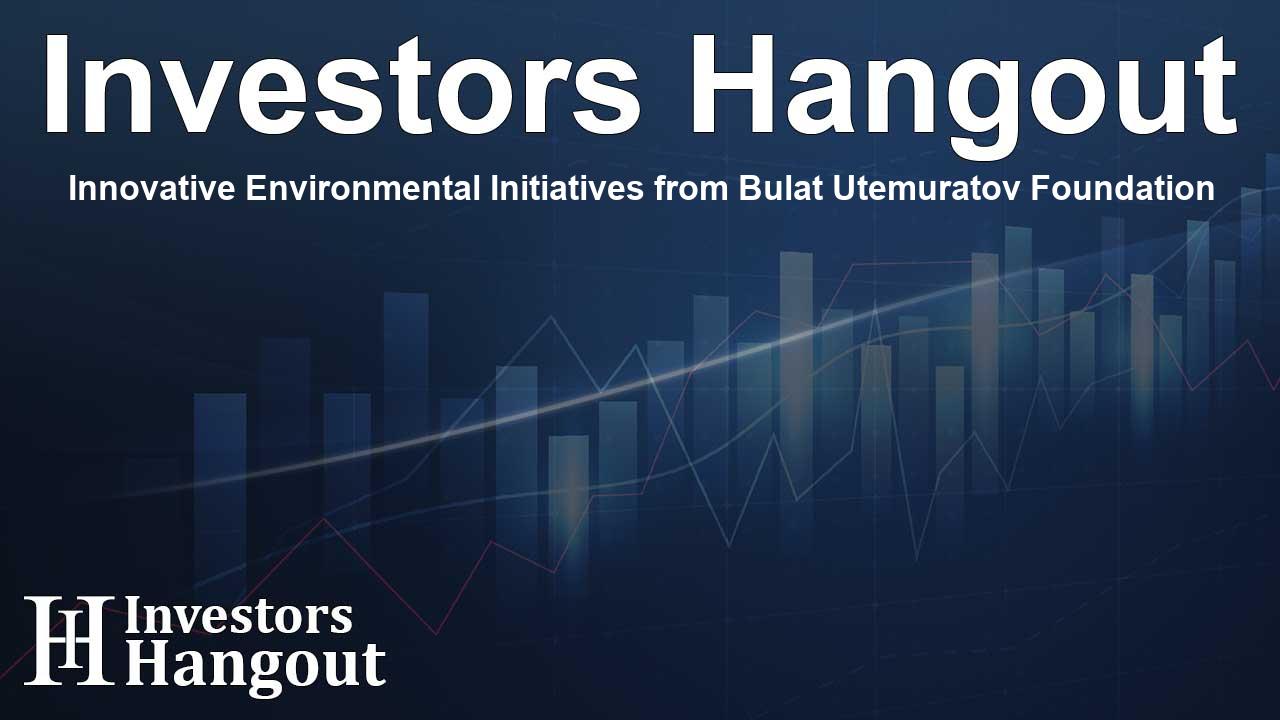Innovative Environmental Initiatives from Bulat Utemuratov Foundation

Bulat Utemuratov Foundation Launches Environmental Restoration Project
The Bulat Utemuratov Foundation has initiated an innovative environmental project focused on revitalizing the Aral Seabed ecosystem. This area, recognized as one of the most ecologically affected zones globally, is receiving attention from distinguished entities such as the University of California, Berkeley, Korkyt Ata Kyzylorda University, and the International Fund for Saving the Aral Sea (IFAS). The collaboration reflects a comprehensive plan aimed at addressing the dire ecological situation prevailing in the region.
Signing of Cooperation Memorandum
The official commencement of this vital project was celebrated through the signing of a memorandum of cooperation among the four involved parties. This formal agreement sets the foundation for the implementation of E-seed technology, a pioneering method that promises to support the rejuvenation of the Aral ecosystem.
Addressing Environmental Challenges
Once known as the fourth largest inland lake in the world, the Aral Sea has tragically diminished to just 10% of its original water surface. This dramatic loss has resulted in extensive salt marshes that emit harmful dust and hazardous pesticide residues. These contaminants have been transported great distances by the wind, affecting regions far beyond the immediate vicinity of the lake.
As the toxic dust spreads, it adversely impacts soil quality, air purity, and water resources, posing severe health risks and threatening food security not only locally but in surrounding territories as well. Hence, the project's importance cannot be overstated; it aims to mitigate these risks and encourage a sustainable recovery process.
Utilizing Cutting-Edge Technology
The foundation's pilot initiative seeks to restore the Aral seabed ecosystem using UC Berkeley's E-seed technology. This advanced method employs drone technology to distribute biodegradable seeds effectively, facilitating large-scale planting efforts with higher seed survival prospects and reduced labor costs. This innovative approach signifies a remarkable step forward in ecological restoration methodologies.
CEO's Vision on the Project
Ainur Karbozova, the CEO of the Bulat Utemuratov Foundation, emphasized the project's critical nature, stating, "The Aral Sea represents one of the pressing environmental challenges we face today. Our launch aims to curb the spread of salt and toxic dust while working towards a healthier ecosystem. Furthermore, this technology has the potential to be adapted for other degraded landscapes, enabling reforestation in areas suffering from desertification and severe wildfires."
Future Steps and Potential Impact
The initial phase of this project will involve test planting on a one-hectare area, set to commence in early spring of 2026. Should the survival rates of the planted seeds exceed 20%, the second phase of the project, planned for 2027, will extend planting efforts across an impressive 50 hectares of the dried seabed. By the year 2040, the project aims to stabilize the surrounding ecosystem significantly and enhance the local microclimate.
With an estimated budget of USD 600,000 for the pilot initiative, this project is integral to Kazakhstan's strategies under President Tokayev's leadership. The country's commitment to chairing the International Fund for Saving the Aral Sea during 2024-2026 emphasizes the goal of expanding green spaces across more than a million hectares of the affected region.
Frequently Asked Questions
What is the aim of the Bulat Utemuratov Foundation's new project?
The project focuses on restoring the Aral seabed ecosystem using innovative E-seed technology to mitigate environmental damage.
Which organizations are collaborating on this initiative?
The project involves notable partnerships including the University of California, Berkeley, IFAS, and Korkyt Ata Kyzylorda University.
When will the test plantings take place?
Test plantings are scheduled to begin in March-April 2026.
What happens if the seed survival rate is successful?
If survival rates exceed 20%, a second phase will expand planting efforts across 50 hectares in 2027.
How much is the estimated budget for the pilot project?
The pilot project has an estimated cost of USD 600,000.
About The Author
Contact Caleb Price privately here. Or send an email with ATTN: Caleb Price as the subject to contact@investorshangout.com.
About Investors Hangout
Investors Hangout is a leading online stock forum for financial discussion and learning, offering a wide range of free tools and resources. It draws in traders of all levels, who exchange market knowledge, investigate trading tactics, and keep an eye on industry developments in real time. Featuring financial articles, stock message boards, quotes, charts, company profiles, and live news updates. Through cooperative learning and a wealth of informational resources, it helps users from novices creating their first portfolios to experts honing their techniques. Join Investors Hangout today: https://investorshangout.com/
The content of this article is based on factual, publicly available information and does not represent legal, financial, or investment advice. Investors Hangout does not offer financial advice, and the author is not a licensed financial advisor. Consult a qualified advisor before making any financial or investment decisions based on this article. This article should not be considered advice to purchase, sell, or hold any securities or other investments. If any of the material provided here is inaccurate, please contact us for corrections.
